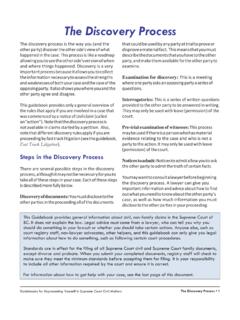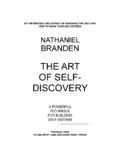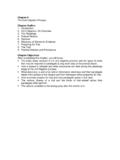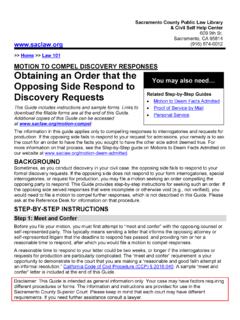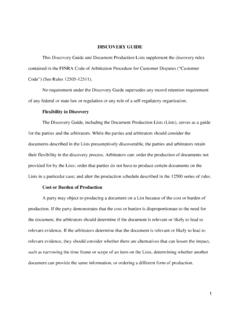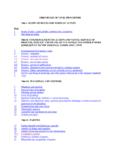Transcription of Hit discovery and hit-to-lead approaches
1 Drug discovery Today Volume 11, Numbers 15/16 August 2006 REVIEWS. Reviews POST SCREEN. Hit discovery and hit-to-lead approaches Gyo rgy M. Keseru 1 and Gergely M. Makara2. 1. CADD&HTS Unit, Gedeon Richter Ltd, 19-21 Gyo mro i u t, Budapest, H-1103, Hungary 2. Merck Research Laboratories, Merck & Co, RY80Y-325, 126 E. Lincoln Ave, Rahway, New Jersey, 07065, USA. Hit discovery technologies range from traditional high-throughput screening to affinity selection of large libraries, fragment-based techniques and computer-aided de novo design, many of which have been extensively reviewed. Development of quality leads using hit confirmation and hit-to-lead approaches present their own challenges, depending on the hit discovery method used to identify the initial hits. In this paper, we summarize common industry practices adopted to tackle hit-to-lead challenges and review how the advantages and drawbacks of different hit discovery techniques could affect the various issues hit-to-lead groups face.
2 It has been shown that marketed drugs are very frequently highly All hit discovery approaches have often orthogonal short- similar to the leads from which they were derived [1]. Thus, both comings prompting the frequent use of multiple techniques for hit the quality and the quantity of lead classes available to medicinal confirmation (Table 1). Challenges facing traditional HTS tech- chemists are primary drivers for discovering best-in-class medi- nologies include high false-positive rates, the need for reporter cines. This makes lead generation a crucial step in the drug dis- assays and the limitation in throughput imposed by testing com- covery process. Over the past decade, high-throughput screening pounds individually [9]. False negatives in HTS probably occur (HTS) of corporate compound decks has become the major para- frequently but, owing to the nature of false negativity, the true digm for hit or lead discovery in big Pharma.
3 The role of HTS in hit incidence is difficult to establish [10]. Affinity methods address discovery has been recently complemented by several fragment- some of these issues and possess several advantages over other based screening technologies, which require different hit-to-lead techniques. However, they are not without their own particular processes. Affinity screening approaches have also emerged as problems in that they do not deliver a functional readout and, orthogonal methods for early lead discovery [2,3]. For affinity- therefore, hits require biochemical, cellular or in vivo validation. based techniques, the readout is typically a qualitative or quanti- Affinity methods are often carried out using mixtures of com- tative signal based on the physical interaction between macro- pounds to increase throughput and, thus, could also require a molecule (RNA, DNA or protein) and the small molecule partner.
4 Deconvolution process to identify single actives. Typical primary With the emerging principle of fragment-based hit generation [4 detection methods of binding in affinity screenings are NMR. 6], hit discovery techniques can be further subdivided based on the spectroscopy, X-ray crystallography, mass spectroscopy (MS). nature of the molecules used to interrogate targets: drug-like and surface plasmon resonance (SPR). compounds that might be tailored to conform to the filters related Sampling of therapeutically relevant chemistry space is the key to the Rule of Five [7], or fragment-like molecules for which the to the success of any hit discovery program. As a result of this, and principle of Rule of Three [8] has been put forth. In addition, both in view of the comments made previously, decision making is compound classes have been the subject of in silico lead discovery often biased by hit-rate expectations because the size of chemistry techniques.
5 Space, the potency of initial hits and the number of compounds screened are clearly interrelated. Better sampling is likely to increase hit-rate and improve the potency of some of the primary Corresponding author: Makara, hits, whereas the chemistry space of smaller fragment-like mole- 1359-6446/06/$ - see front matter 2006 Elsevier Ltd. All rights reserved. 741. REVIEWS Drug discovery Today Volume 11, Numbers 15/16 August 2006. TABLE 1. Hit discovery and confirmation techniques Primary Molecule class Detection Hit discovery Sampling Hit confirmation Hit discovery techniques assay advantages challenges Biochemical Drug-like Mostly Preliminary SARa Very poor Data noise, false positives, Affinity confirmation, counter fluorescence false negatives screening (proteins, artifacts), preference for cluster hits Fragment-like Mostly Minimal resource Better False positives, weak potency Multiple assays, counter screening fluorescence need (artifacts), preference for structural Reviews POST SCREEN.
6 Data Affinity Drug-like MS Large mixture Poor Deconvolution, false positives Biochemical confirmation in discrete capability by MS, false negatives format, mixture optimization Fragment-like NMR Structural Better Weak potency, false positives, Biochemical confirmation, structure information no SAR guided optimization, site-directed screening Fragment-like X-ray Structural Better Weak potency, false negatives, Biochemical confirmation, structure information no SAR guided optimization In silico Drug-like Scoring Chemistry-less Better Need experimental confirmation Biochemical confirmation, model filtering and preferably structural data refinement by enrichment studies for model Fragment-like Scoring Chemistry-less Good Need experimental confirmation Biochemical confirmation, model filtering and preferably structural data refinement by enrichment studies for model a Assuming preference for cluster hits.
7 Cules is exponentially smaller than that of drug-like molecules value-based management tools and high-throughput processes for [11]. In the lead- discovery environment, false positives can result all its components. hit-to-lead processes are anticipated to have from multiple mechanisms, including: nonspecific hydrophobic high failure rates compared with lead optimization programs, but binding, poor solubility (protein or substrate precipitation), the the early and relatively less costly elimination of undesirable or tendency of small molecules to form aggregates, reactive func- intractable lead classes is of significant value before extensive tional groups, low purity, incorrect structural assignment or com- medicinal chemistry efforts are initiated. pound concentration, interference with the assay or its readout, The method of choice for primary hit generation is often and experimental errors.
8 False negatives can be the result of poor determined by the available infrastructure, resources, prior screen- solubility, chemical instability, low purity, lower than expected ing experience and predicted hit rate in the context of therapeutic compound concentration, interference with the assay or its read- needs ( anticipated mechanistic limitations, off target selectiv- out, and experimental errors. ity, and pharmacokinetic and pharmacodynamic issues). The The generation of viable chemical leads requires at least two next, and equally crucial, phases in lead discovery , hit confirma- components: (i) a clear and rational definition of the requirements tion and the hit-to-lead processes, need to be tailored to deal with of the lead in terms of physical, chemical, biological and pharma- the various challenges encountered in the selected hit discovery cological properties; and (ii) a straightforward strategy to achieve processes as summarized in the preceding paragraph.
9 Only after these goals. A generic lead profile can be used for defining the most proper follow up can a confirmed hit list be compiled for planning important characteristics of lead compounds, such as potency, a potential hit-to-lead optimization campaign. Because blind selectivity, physicochemical parameters, and in vitro ADME fea- screening will remain the predominant method for orphan or tures like microsomal and/or hepatocyte clearance and perme- validated targets with no known leads, we review common indus- ability. The exact composition of the necessary requirements for a try practices for small-molecule hit generation and follow up, and lead compound are highly dependent on the therapeutic area or elaborate on common relationships between the hit discovery need, and are usually extended by some less exact needs ( method of choice and the follow-up issues presented.)
10 Synthetic accessibility, optimization potential and patentability). that can be of equal or even greater importance. The consequences Hit identification associated with this multidimensional hit-to-lead process are the Hits and leads can be derived from many sources. Novel targets are requirement for (i) dedicated hit-to-lead or exploratory medicinal typically interrogated in a high-throughput campaign if a suitable chemistry groups with significant chemistry automation, who are assay can be developed. Before or simultaneously with that able to provide fast validation of the promising hits, (ii) extensive process, small focused compound sets are frequently assayed in a hit profiling activity including cell-based assays and secondary medium-throughput fashion to identify molecules for pharmaco- screening with acceptable throughput at the early phase of the logical target validation.










